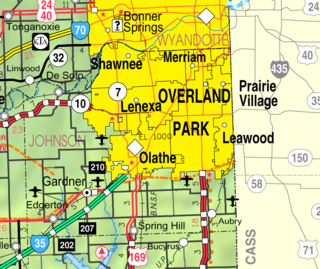
Pawnee Rock is a city in Barton County, Kansas, United States. As of the 2020 census, the population of the city was 193.

Aurora is a city in Cloud County, Kansas, United States. As of the 2020 census, the population of the city was 56.

Manchester is a city in Dickinson County, Kansas, United States. As of the 2020 census, the population of the city was 47.

Coolidge is a city in Hamilton County, Kansas, United States. As of the 2020 census, the population of the city was 80. It is located along Highway 50 about 1 mile east of the Colorado-Kansas border.

Syracuse is a city in and the county seat of Hamilton County, Kansas, United States. As of the 2020 census, the population of the city was 1,826. It is located along Highway 50.

Burr Oak is a city in Jewell County, Kansas, United States. As of the 2020 census, the population of the city was 140.

Esbon is a city in Jewell County, Kansas, United States. As of the 2020 census, the population of the city was 69.

Webber is a city in Jewell County, Kansas, United States. As of the 2020 census, the population of the city was 30.

Edgerton is a city in Johnson County, Kansas, United States, and part of the Kansas City metropolitan area. As of the 2020 census, the population of the city was 1,748. It is home to a large BNSF intermodal train facility named Logistics Park Kansas City.

Westwood Hills is a city in Johnson County, Kansas, United States. As of the 2020 census, the population of the city was 400. It is the most densely populated city in the Kansas City Metropolitan Area at 6,240 people per square mile. It borders Kansas City, Missouri.

Lehigh is a city in Marion County, Kansas, United States. As of the 2020 census, the population of the city was 161. It is located between Hillsboro and Canton on the north side of U.S. Route 56.

Lost Springs is a city in Marion County, Kansas, United States. As of the 2020 census, the population of the city was 55. The city was named for a nearby lost spring that was a camping spot along the 19th century Santa Fe Trail. It is located south of Herington, about 0.6 miles west of the intersection of U.S. Route 77 highway and 340th Street next to the Union Pacific Railroad.

Council Grove is a city in and the county seat of Morris County, Kansas, United States. As of the 2020 census, the population of the city was 2,140. It was named after an agreement between American settlers and the Osage Nation allowing settlers' wagon trains to pass westward through the area on the Santa Fe Trail. Pioneers gathered at a grove of trees so that wagons could band together for their trip west.

Burlingame is a city in Osage County, Kansas, United States. As of the 2020 census, the population of the city was 971.

Cheney is a city in Sedgwick County, Kansas, United States. As of the 2020 census, the population of the city was 2,181.

Valley Center is a city in Sedgwick County, Kansas, United States, and a suburb of Wichita. As of the 2020 census, the population of the city was 7,340.

Viola is a city in Sedgwick County, Kansas, United States. As of the 2020 census, the population of the city was 115.

Gladstone is a city in Clay County, Missouri, United States and a suburb of Kansas City. The City of Gladstone is located about 10–20 minutes from downtown Kansas City, and about 10–20 minutes from Kansas City International Airport. As of the 2020 census, the city population was 27,063. It is part of the Kansas City metropolitan area.

Oaks is a village in Clay County, Missouri, United States. The population was 128 at the 2020 census. It is part of the Kansas City metropolitan area.

Mulvane is a city in Sedgwick and Sumner counties in the U.S. state of Kansas. As of the 2020 census, the population of the city was 6,286.


















